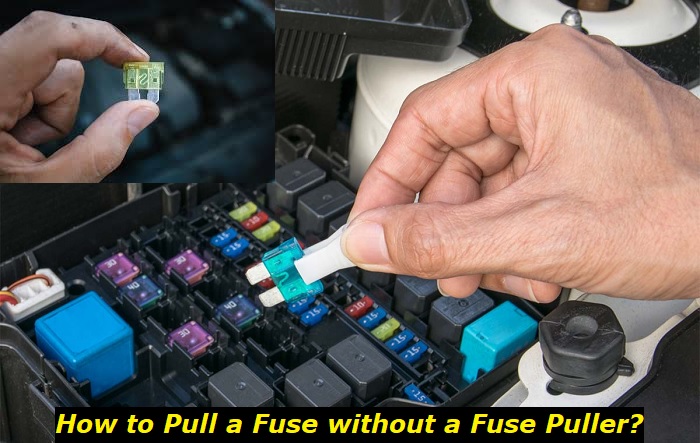A lot of possible electrical problems with your vehicle occur because of faulty fuses. Any fuse can fail and eventually lead to some important parts of your car not working. So, you should know how to locate a certain fuse and how to take it out to check if it still can work. Sometimes, you just won't have any appropriate instruments for this, so we've decided to write a short article to tell you more about how to deal with the issue.
Fuse problems highlights
- Level of urgency:medium
- DIY inspection:possible
- DIY repairs:possible
- Can you drive?yes, if it starts
- Price of repairs:$0 - $50
- Ifignored:certainequipment will not be working at all
- Ways to fix:test the fuses, replace the blown fuse

How to locate the needed fuse?
This is the most complicated part because there are hundreds of fuses in your vehicle and they are placed in a couple of different blocks all around the car. The most usual places for them are on both sides of the dash, under the glovebox, under the hood, in the trunk, under the seats, etc. You will find the full map in the driver's manual. If you don't have one, just find the map online.
You may notice that not all maps are true for your car. So, the manufacturer usually places other mini maps in the vehicle for your confidence. The most common place for these maps is under the plastic lids that cover the fuse boxes. Just look at them and see the map of this certain fuse box with the names and specifications of each fuse.
Also, in one of these boxes, you may find extra fuses and even a fuse puller. But in most cars, these fuses and pullers are lost.
So, what to do if you don't have the fuse puller?
Let's imagine you've successfully located the broken fuse. Look at it carefully and you will see whether this fuse is actually bad. It may be a little black. Even if it looks OK, it may be blown, so take it out anyway to inspect the fuse closely.
So, if you don't have a fuse puller, you can use these ways of pulling out the broken fuse:
- needle-nose plier - this is the compact instrument that you may have in your vehicle or buy at some nearby shop to easily pull out the fuse;
- any piece of plastic that is bent in the end and can hook the fuse - all fuses have some place to hook them up and pull out successfully;
- a metal instrument that can hook up the fuse - it can be anything starting with some scissors and even a rusty piece of metal;
- use your hands - if you don't have any other option, you may use your hands and slowly take the fuse out just pushing it in different directions - just like you would pull out the baby tooth when it's already loose.
Most fuses sit tightly in their places, but you can still take them out with your hands. Take your time, loosen it a little by shaking the fuse on different sides and then just pull it out when you feel it becomes loose.
It's not always possible to take out the fuse by hand, so we still recommend using some other instruments or objects to help you.
Some important considerations before getting to the work
- Never take out any fuses before you perfectly know that this is exactly the fuse you need. You may just damage the box and have a big problem after that.
- Never take any fuses until the vehicle is off, the ignition should be off and the key should be out of the keyhole.
- Don't touch the contacts of the fuse box with the metal instruments you use for pulling out the fuse because you may damage some electric modules in your car.
- Never use fuses of a different type (more or fewer amps), you can damage the electrical system of your car heavily.
- If you need to repair something quickly, you may take the fuse of the same color from other equipment that is not so important (dome light, AC, fog light, etc.).
Final words
Messing up with fuses is not the most complicated work, so you may do it yourself without paying big money for labor in the repair shop. But you should know what you are doing, otherwise, you may damage some electrical component or unit in your vehicle and it will lead to big problems in the future.
About the authors
The CarAraC research team is composed of seasoned auto mechanics and automotive industry professionals, including individuals with advanced degrees and certifications in their field. Our team members boast prestigious credentials, reflecting their extensive knowledge and skills. These qualifications include: IMI: Institute of the Motor Industry, ASE-Certified Master Automobile Technicians; Coventry University, Graduate of MA in Automotive Journalism; Politecnico di Torino, Italy, MS Automotive Engineering; Ss. Cyril and Methodius University in Skopje, Mechanical University in Skopje; TOC Automotive College; DHA Suffa University, Department of Mechanical Engineering






Add comment